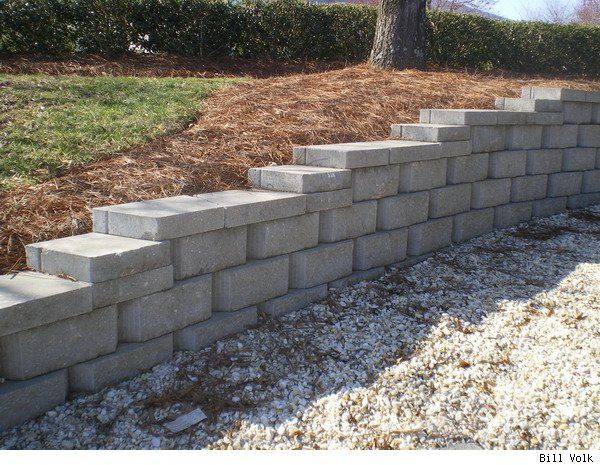Block retaining walls are one of the most reliable solutions for controlling soil, preventing erosion, and creating a solid landscape structure. They are commonly used in both residential and commercial projects because of their strength, versatility, and visual appeal. But one common question homeowners and property managers ask is: how long will a block retaining wall actually last?
The simple answer is that a well-built block retaining wall can last anywhere from 30 to 100 years or more. The exact lifespan depends on several factors, including the quality of construction, the type of materials used, and how well the wall is maintained over time. Let’s take a closer look at what influences the durability of these walls and how you can maximize their life.
Average Lifespan of Block Retaining Walls
On average, block retaining walls are designed to stand strong for multiple decades. Unlike timber walls, which may rot or attract pests, block walls made from concrete or stone are naturally resistant to weathering and environmental damage. With proper installation and drainage, it’s not unusual for them to remain structurally sound for half a century or longer.
Many homeowners in coastal areas, such as those looking for Block Retaining Walls in Oceanside, CA, choose blocks over other materials because they can withstand the unique climate challenges, including moisture and salt in the air. Proper construction techniques play a big role in ensuring these walls stay intact for generations.
Factors That Affect Longevity
The lifespan of a block retaining wall isn’t just about the material itself. Several factors influence how long it will remain in good condition:
-
Quality of Construction
The foundation and drainage system beneath the wall are critical. If the base isn’t compacted properly or water isn’t directed away from the structure, pressure will build up behind the wall and shorten its life. -
Material Strength
Concrete blocks are highly durable, but different grades of block offer varying levels of strength. Choosing blocks designed for structural use ensures maximum resilience. -
Drainage and Moisture Control
Water is one of the main reasons retaining walls fail. Installing drainage pipes, gravel backfill, and waterproofing layers reduces stress on the wall and extends its lifespan. -
Soil Conditions
Heavy clay soil expands when wet and puts more pressure on the wall compared to sandy soil. Understanding the type of soil on your property helps in designing a wall that will last. -
Maintenance Over Time
Even though block retaining walls require minimal upkeep, occasional checks for cracks, leaning, or drainage issues go a long way in preserving their strength.
Maintenance Tips for Longer Lifespan
While block retaining walls are low-maintenance, they still benefit from some basic care. Here are a few practical steps:
-
Keep drainage outlets clear of debris so water can flow freely.
-
Check for cracks or bulging areas and address them early.
-
Remove plant roots growing too close to the wall, as they can add pressure.
-
Repoint or seal joints if mortar begins to wear away.
Following these steps helps extend the life of your wall and ensures it continues to look great.
Why Professional Installation Matters
A DIY retaining wall might seem appealing, but improper construction often leads to early failure. Professional builders know how to calculate soil pressure, install the right foundation, and add proper reinforcement. This expertise is what gives block retaining walls their long-lasting reputation.
Many homeowners have found that working with established companies makes a noticeable difference. For example, Best Builders Construction is often mentioned in the industry for delivering durable retaining walls that combine strength with aesthetic design. Their experience and focus on quality make them a trusted choice when it comes to projects that need to last for decades.
Do All Retaining Walls Last the Same?
Not all block retaining walls are built equally. A small garden wall may not need the same reinforcement as a tall structural wall holding back tons of soil. The higher the wall, the more important professional engineering becomes. That’s why consulting experts before construction is always recommended—especially in regions with unique soil or weather conditions.
Long-Term Value of Block Retaining Walls
When considering the cost of construction, some homeowners hesitate at the initial price. However, the long lifespan of block retaining walls makes them a cost-effective investment. Compared to wood or other temporary solutions, the durability of blocks means fewer repairs and replacements over the years.
For property owners who want peace of mind, investing in a block wall is often the smartest choice. This is especially true for those searching for reliable Block Retaining Walls in Oceanside, CA, where weather conditions can test the limits of less durable materials.
Conclusion
So, how long will a block retaining wall last? With proper design, quality materials, and good maintenance, you can expect your wall to serve you well for 50 years or more. In many cases, these walls outlive their owners, becoming a permanent feature of the landscape.
The key is to focus on correct construction methods and to work with builders who understand the science behind retaining walls. By doing so, you’ll not only gain a functional structure but also a lasting investment in your property’s value and safety.







0 Comments